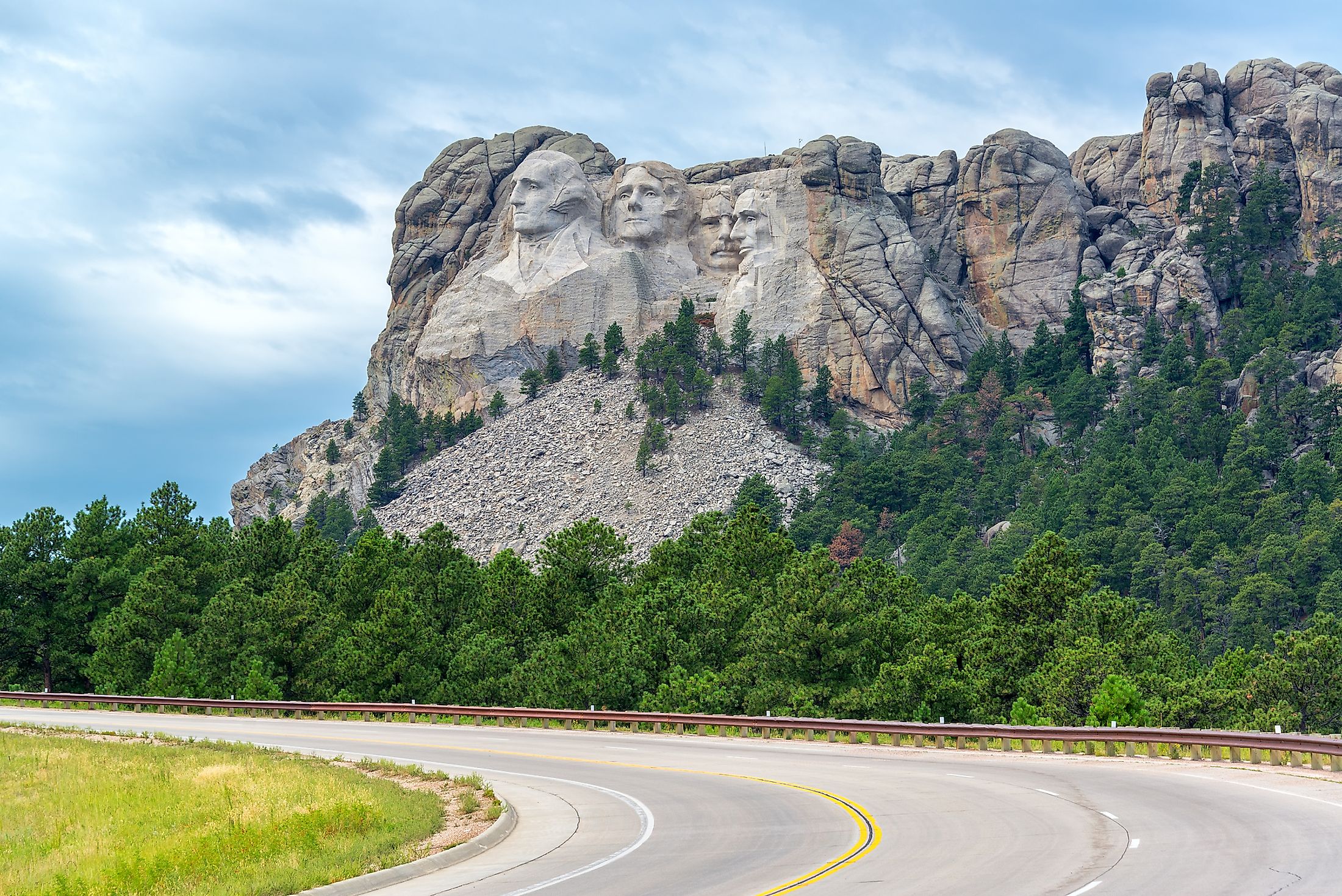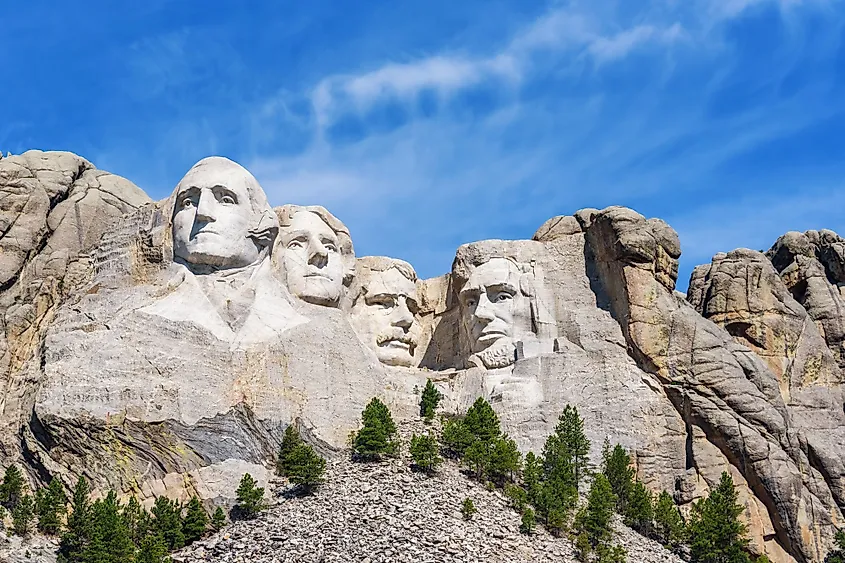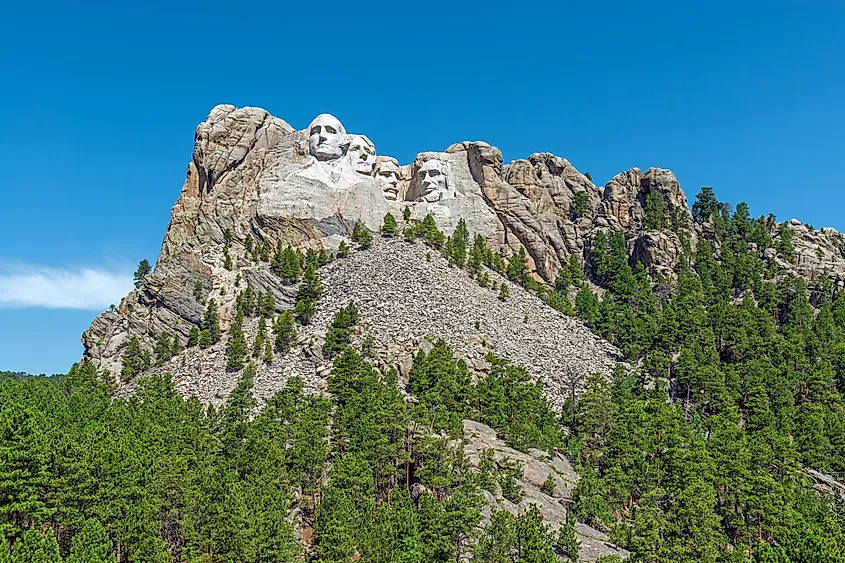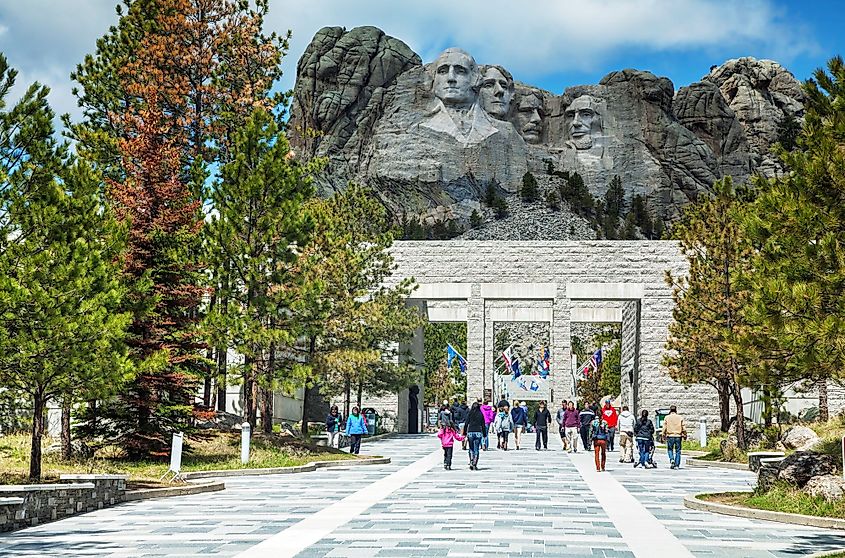
Mount Rushmore
Mount Rushmore is situated in the Black Hills region, in the Keystone town of South Dakota, United States. The Mount Rushmore National Memorial hosts the colossal granite rock sculptures of the four famous US Presidents that were carved in the southeastern face of Mount Rushmore. Often referred to as the “Shrine of Democracy”, Mount Rushmore attracts more than 2 million visitors every year.
Geography

Mount Rushmore National Memorial is located about 40km to the southwest of Rapid City and about 16km to the northeast of Custer city. The memorial park covers an area of 5.17 sq. km with Mount Rushmore rising to an elevation of 1,745m. According to Köppen's climate classification, Mount Rushmore experiences a humid continental climate, with May and June being the two wettest months. It has been recorded that the area receives an average precipitation of about 460mm every year. Mount Rushmore is mainly composed of granite and the colossal granite rock sculptures feature the 18m high heads of four US Presidents: George Washington, Thomas Jefferson, Theodore Roosevelt, and Abraham Lincoln.
Ecology

Mount Rushmore forms a part of the Black Hills National Forest. The region is mostly covered by the ponderosa pines. Other trees like Black Hills spruce, bur oak, cottonwood, aspens, and a variety of grasses and wildflowers are also found. The plant life becomes sparser at the higher elevations. Some of the notable mammals that are found here include red squirrel, chipmunk, porcupine, beaver, American bison, mule deer, bighorn sheep, etc. Many birds like the red-tailed hawk, bald eagle, white-throated swifts, swallows, woodpeckers, nuthatches, etc are also found here.
Construction History
The Black Hills were revered as sacred by the Lakota Sioux, who were the occupants of the area when the settlers arrived in the area. In 1868, the Treaty of Fort Laramie was signed by the Lakota Sioux tribes and General Willam T. Sherman, where the U.S. Government promised the Sioux tribes, an undisturbed use, and occupation of territory in the entire Black Hills region. However, the discovery of gold in the region led to the migration of numerous prospectors in the 1870s. The US federal government, therefore, forced the Sioux tribes to relinquish their claims on the Black Hills portion of their reservation. A fierce battle known as the Wounded Knee Massacre took place in the 1890s between the US Army and the Native Americans. It is believed that in this battle, several hundreds of unarmed Sioux men, women, and children were shot and killed by the federal troops. Eventually, the US federal government took control of the Black Hills region.
Mount Rushmore was initially known as “The Six Grandfathers” or “Cougar Mountain” to the Lakota Sioux. This mountain was situated on the route the Lakota leader Black Elk took while on a spiritual journey and hence was revered as sacred by the indigenous tribe. In 1885, a wealthy American businessman named Charles Edward Rushmore began to frequently visit the area along with David Swanzey and Bill Challis, on hunting and prospecting trips. In June 1930, the United States Board of Geographic Names officially named the mountain “Mount Rushmore”.

In 1923, the South Dakota state historian Doane Robinson decided to use the Black Hills area as an opportunity to promote tourism in South Dakota. He suggested the idea of creating a monumental sculpture in the Black Hills to honor the greatest heroes of the West including both pioneers and the Native Americans. The historian also suggested making the carvings into the granite pillars that were known as Needles. In 1924, Doane Robinson requested the renowned American sculptor Gutzon Borglum to travel to the Black Hills region for creating the sculpture.
Mr. Borglum realized that the eroded granite pillars were too thin to support sculpting, and therefore he chose Mount Rushmore for his sculpture. There were several reasons behind selecting Mount Rushmore. Firstly, Mount Rushmore was composed of smooth, solid granite rock. Secondly, the durable granite rock had an erosion rate of about 1 inch in every 10,000 years and was therefore strong enough to support such a colossal sculpture and its long-term exposure. Thirdly, rising to an elevation of 1,745m, the tall Mount Rushmore had the advantage of facing towards the southeast direction and receive maximum exposure to sunlight.
The project was finally approved by the US Congress on March 3, 1925. The carving of the National Memorial started on October 4, 1927, after its dedication by President Calvin Coolidge, and ended on October 31, 1941. During this period, Mr. Borglum and over 400 workers blasted, chiseled, and sculpted the colossal 18m high carvings of the four heads of US Presidents: George Washington, Thomas Jefferson, Theodore Roosevelt, and Abraham Lincoln. The total cost of the project was about $989,992.32, which was mainly borne by the federal government and some private donations.
The four American Presidents were chosen to symbolize the first 150 years of the United States, with George Washington symbolizing the birth of the country; Thomas Jefferson representing the country’s growth and expansion; Theodore Roosevelt representing the development of the United States and Abraham Lincoln symbolizing the preservation of the United States.











